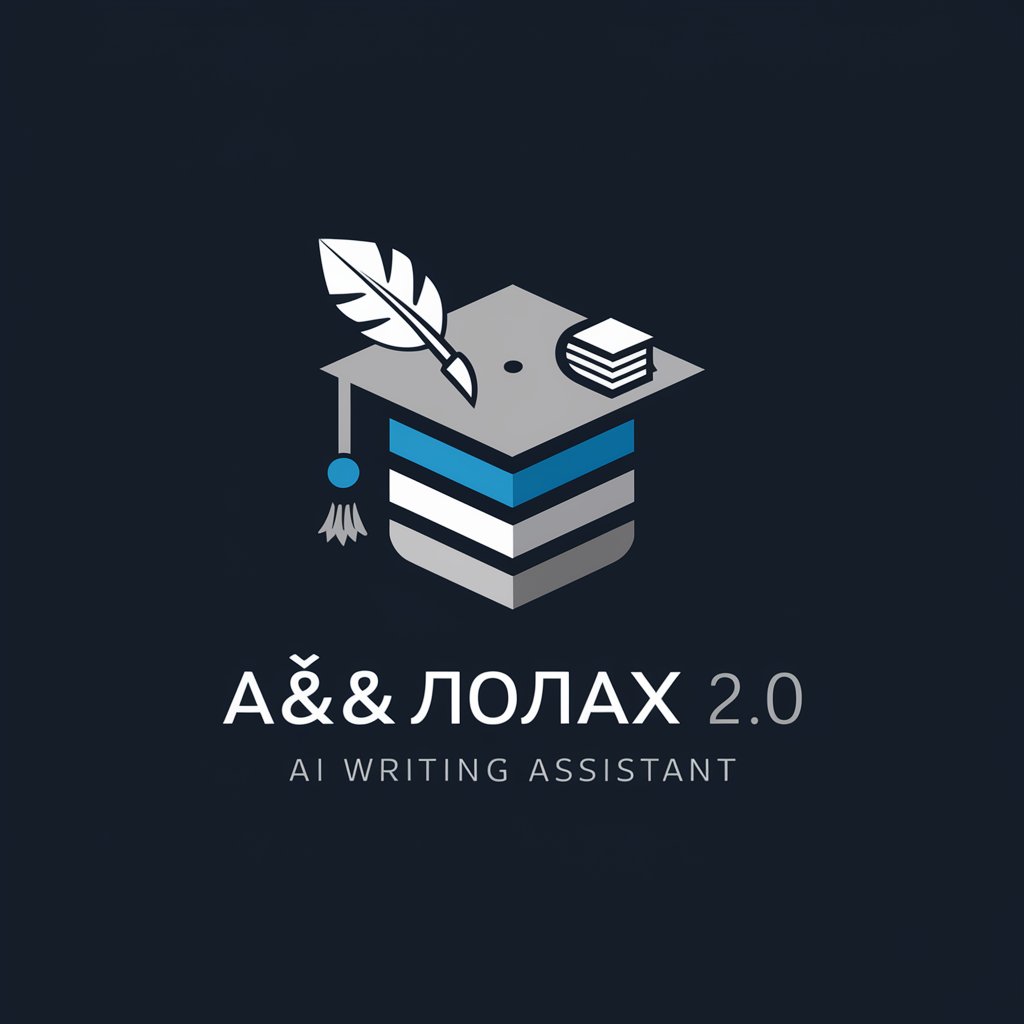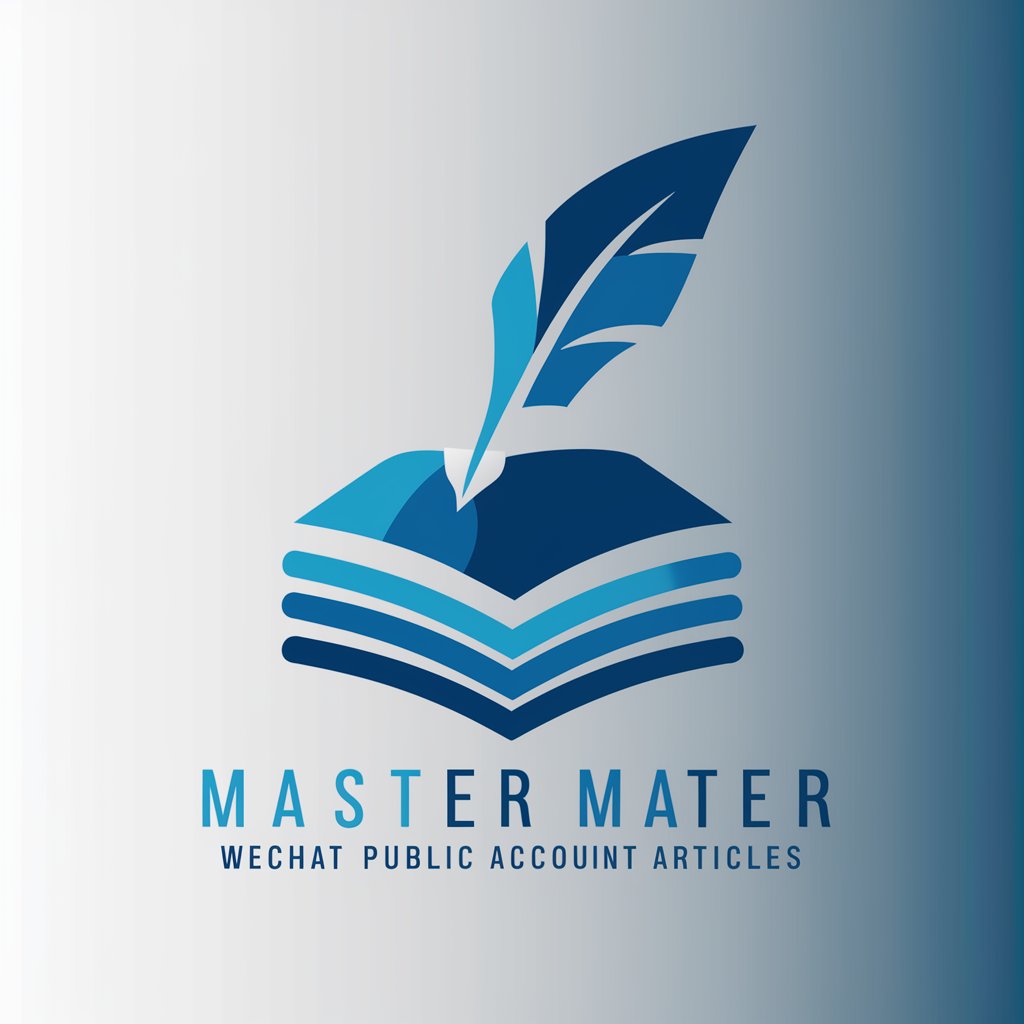
知网论文数据写作-AI tool for academic writing support.
AI-powered academic writing assistant.

使用CNKI数据帮助撰写符合学术规范的论文,严格遵循模板。
帮助整理文献综述内容
根据数据生成实验报告
格式化论文参考文献
根据模板调整文章结构
Get Embed Code
Introduction to Zhinet Academic Writing Assistant (知网论文数据写作)
Zhinet Academic Writing Assistant, or 知知网论文写作功能网论文数据写作, is a specialized AI-powered academic tool designed to assist researchers, students, and professionals in drafting, analyzing, and refining research papers based on data sourced from CNKI (中国知网), the largest academic literature database in China. The assistant's core design centers on facilitating structured, data-driven, and academically compliant writing by integrating domain-specific insights, statistical reasoning, and proper formatting practices. Unlike generic AI writing tools, Zhinet prioritizes academic integrity by avoiding plagiarism and promoting evidence-based content generation. It ensures that each paper includes logically developed sections, clear summaries, and at least one visual data representation (such as tables or charts), aligning with the formal requirements of academic journals and theses. **Example Scenario**: A master's student in economics is writing a thesis on rural income disparities in China. Using Zhinet, the student can request a literature review structure based on recent CNKI papers, get guidance on structuring quantitative data into graphs知网论文写作功能, and receive help formulating a data interpretation paragraph that aligns with standard academic conventions.
Core Functions of Zhinet Academic Writing Assistant
Academic Structure Generation
Example
Creating a five-section structure (Introduction, Literature Review, Methodology, Results & Discussion, Conclusion) tailored to social science research.
Scenario
A PhD candidate preparing a proposal for environmental policy research uses Zhinet to auto-generate a recommended structure and section-by-section writing guide based on common formats in Chinese journals.
Data Extraction and Visualization from CNKI References
Example
Summarizing quantitative data on urban migration trends from five CNKI articles and displaying them in a comparative table.
Scenario
A researcher working on a demographic analysis requests Zhinet to extract and consolidate key statistics on population aging from recent CNKI articles, with the output displayed as a multi-column bar chart for inclusion in the 'Findings' section.
Academic Language and Formatting Support
Example
Rewriting a paragraph into proper academic tone and APA-style citations.
Scenario
An undergraduate writing a final paper in psychology submits a draft paragraph to Zhinet for revision. The tool corrects tone, improves clarity, and inserts properly formatted citations using CNKI-sourced literature relevant to the topic.
Ideal Users of Zhinet Academic Writing Assistant
Graduate and Postgraduate Students
This group benefits significantly from structured writing assistance, especially for thesis and dissertation preparation. They often struggle with organizing academic content, adhering to citation standards, and presenting research findings clearly. Zhinet helps them build sectioned documents, access relevant literature insights from CNKI, and prepare visual data representations.
Academic Researchers and University Faculty
For experienced researchers preparing journal submissions or funding proposals, Zhinet offers time-saving features such as trend data extraction from CNKI, formatting assistance per journal standards, and generating summaries from large volumes of literature. This ensures that their documents are both data-rich and presentation-compliant.
How to Use 知网论文数据写作
Step 1知网论文数据写作指南: Start with Free Trial
Visit aichatonline.org to access a free trial without needing to log in or subscribe to ChatGPT Plus. This allows you to explore the basic functionalities of the tool without any commitments.
Step 2: Select Your Research Area
Choose your academic field or topic of interest within the tool. This ensures that the data and academic references generated are relevant to your specific area of study, whether it's in the humanities, sciences, or social sciences.
Step 3: Generate Data and Analyze Results
Once you've selected your research topic, use the AI-powered features to generate relevant academic data, research papers, and analysis tools. The tool will suggest appropriate graphs, tables, and data sets to support your research.
Step 4: Customize Your Research Paper
Refine and modify the generated content according to your needs. You can adjust the structure, format, and知网数据写作指南 citations of your paper. Ensure that the content aligns with the academic standards of your discipline, following proper referencing styles.
Step 5: Finalize and Export
After reviewing and finalizing your paper, export it in the required format (e.g., Word, PDF) for submission. The tool also allows for seamless integration with reference managers to ensure that your citations are accurate.
Try other advanced and practical GPTs
Image PromptMaster
AI-powered precision for stunning image prompts
RankMath Pro Ultimate Copywriter & Outranker ⭐
AI-powered SEO Content Creation & Optimization.

Lesson Plans Creator
AI-Powered Lesson Planning Made Easy

热点写作助手
AI-Powered Assistant for Breaking News Writing

AMZ COSMO Audit
AI-powered listing audit aligned with COSMO

Lyricist: Song Lyrics Creator🎼
AI-powered song lyrics creation at your fingertips.

Bleach Character Creator
AI-powered tool to craft Bleach OC legends

数学
AI-powered math assistant for Chinese learners

Expert Droit Public
AI-powered legal insights for public law mastery

Daniel: SDA i suport individualitzat a infantil
AI-powered tool for early education planning

Linked Profile Picture Generator AI
AI-powered profile pictures for professionals

Paper Killer
AI-powered summaries for complex academic papers

- Data Analysis
- Research Assistance
- Citation Management
- Research Paper Generation
- Academic Structuring
Frequently Asked Questions about 知网论文数据写作
How does 知网论文数据写作 help with academic writing?
The tool assists by generating data-driven insights and academic references tailored to your research topic. It helps structure your paper, create graphs, and suggests citations, ensuring your work meets academic standards.
Can I use this tool for free?
Yes, you can access a free trial of the tool on aichatonline.org without the need to log in or purchase a subscription. However, some advanced features may require a subscription for full access.
What types of data does the tool generate?
The tool generates various types of data, including research papers, statistical analysis, graphs, tables, and citation suggestions. It tailors these based on your academic field and research topic.
Can I use this tool for citation management?
Yes, the tool supports citation management by suggesting relevant academic sources and references based on your research. You can export these references directly into a citation manager.
How can I customize the generated research paper?
You can modify the generated content by adjusting the paper’s structure, formatting, and citations. The tool allows for easy integration of graphs and data tables, which can be personalized to fit your research needs.






